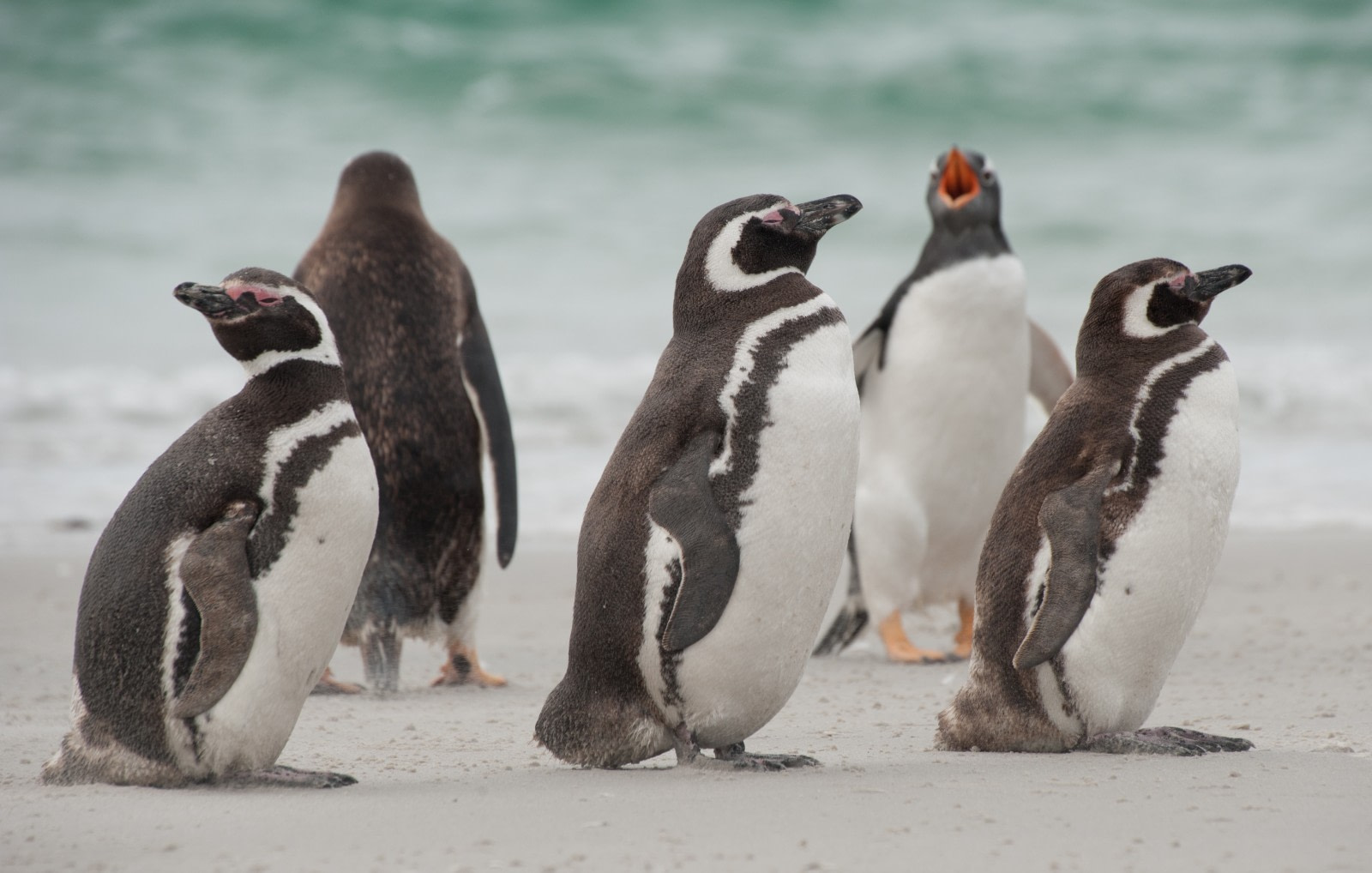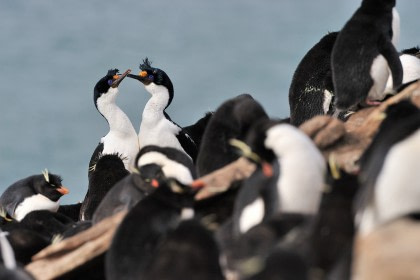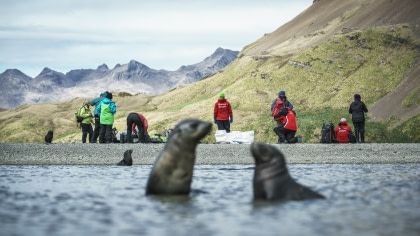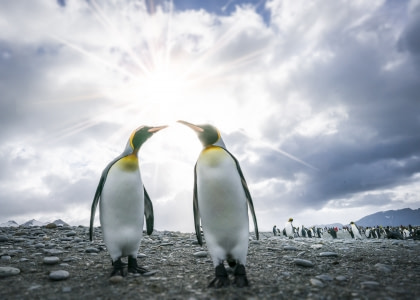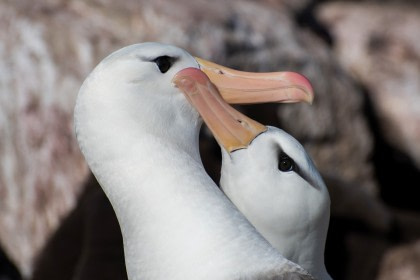Name: Magellanic Penguin (Spheniscus magellanicus)
Height: 60 to 75 cm.
Weight: 2.5 to 6.5kg.
Location: South America.
Conservation status: Near Threatened.
Diet: Cuttlefish, squid, krill, other crustaceans.
Appearance: Black on backs, outside of flippers, and caps. White bellies, insides of flippers, and a white band that runs from the eyebrow area down to under the face. 2 black bands that run horizontally between the head and the chest.
How do Magellanic Penguins feed?
Because of environmental changes which have displaced fish stocks the Magellanic Penguins now have to swim a further 80 km to hunt, delaying a return to the nest where the incubating or rearing parent is without food. The Magellanic Penguins stay together with their flock while hunting, diving as far down as 75 metres.
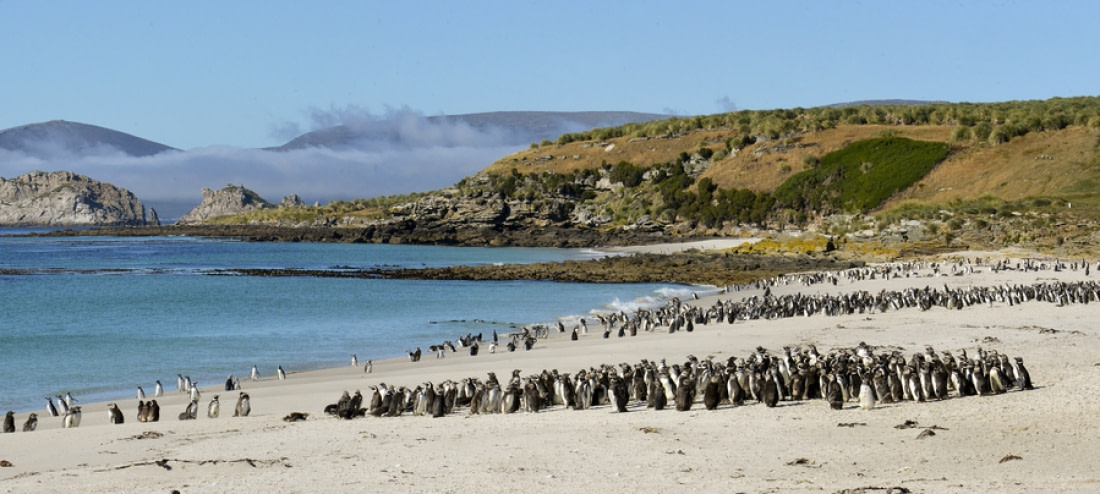
Are Magellanic Penguins social?
Magellanic Penguins stay together in flocks as they hunt for food. They join larger colonies on land when breeding season arrives.
How fast do Magellanic Penguins swim?
Magellanic Penguins can swim at almost 25km per hour.
What are Magellanic Penguin mating rituals like?
Female Magellanic Penguins mature sexually around 4 years of age, males around 5 years. Magellanic Penguins gather in huge nesting colonies during the breeding season along the coasts of the Falkland Islands, the south end of Chile, and Argentina. These colonies can number as high as 400,000 individuals. The Magellanic Penguins are monogamous, returning to the same mating partner every year. The male will usually arrive a bit earlier during mating season to make sure some other opportunistic Penguin hasn’t tried to move into their burrow. The female is able to find her mate through his call. The Penguins begin arriving and mating in September, the egg laying begins in October.
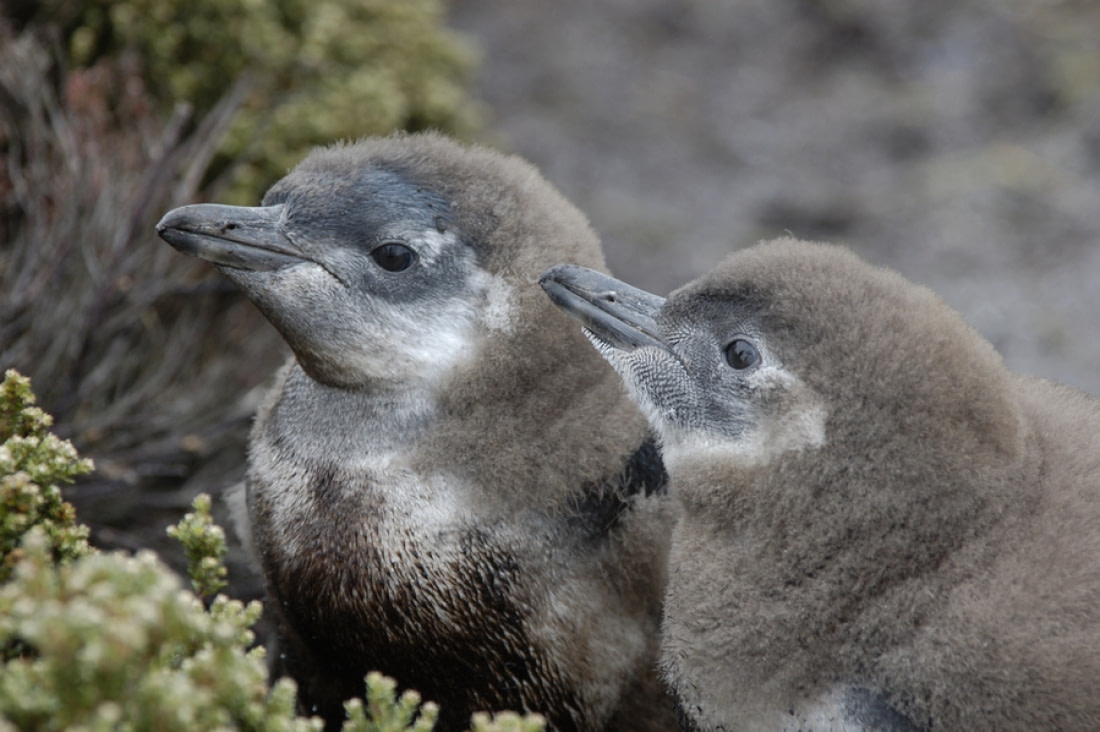
Two eggs are usually laid. The incubation of the eggs lasts around 40 days, the parents swapping off the incubation shift every week and a half or so. The non-incubating parent heads off to sea to hunt and restore body fat since they don’t eat at all while on incubation duty. Once the chicks hatch both parents take turns taking care of it, again swapping off so one can go hunt and bring back food to the nest every 2 or 3 days. This process takes a full month. By the end of the first month after hatching the chicks will have begun to grow their waterproof feathers. Because they’re born in burrows that shelter them both from the elements and from predators Magellanic Penguin chicks do not form protective groups (called “crèches”) with other chicks like many other types of Penguin offspring. The chicks graduate to fledglings (adolescent Penguins with grown-in feathers) anywhere from 2 to 16 months after hatching, depending heavily on how much food is available in the area.
How long do Magellanic Penguins live?
Magellanic Penguins live an average of 25 years in the wild.
How many Magellanic Penguins are there today?
There are estimated to be about 1.5 million breeding pairs of Magellanic Penguins in the world today, though there have been population declines of up to 10% recorded in the Falklands.
Do Magellanic Penguins have any natural predators?
Magellanic Penguins do not have any natural predators in the beach areas where they breed. However while at sea they are prey to Leopard Seals, Large Fur Seals, and Killer Whales.
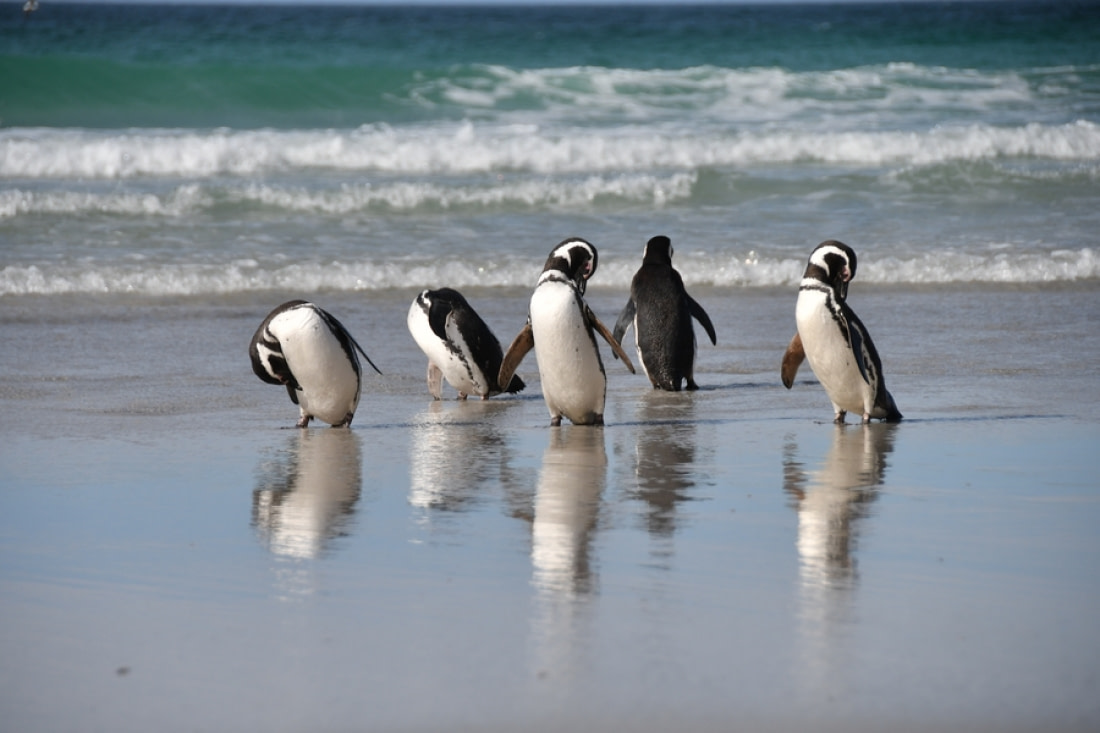
7 Majestic Magellanic Penguin Facts
- Magellanic Penguins are named after the explorer Ferdinand Magellan whose crew first spotted them in the year 1520.
- Like some other Penguins, Magellanic Penguins swallow a lot of ocean water, which has far too much salt for their bodies to absorb. They excrete the extra salt with special glands located near the eyes.
- If they get too hot Magellanic Penguins will shed some feathers around their beak, pant like a dog, and extend their flippers outward in the hopes of catching a breeze (and to increase the surface area from which they can release heat).
- Oil spills washing up along the coast of Argentina are the biggest threat to the Magellanic Penguin population.
- Magellanic Penguins are a nervous example of the species, and will scatter for the cover of their burrows when approached by humans.
- Magellanic Penguins are the largest example of the genus Spheniscus which includes Galapagos Penguins, Humboldt Penguins, and African Penguins.
- While their burrows provide protection from the cold and predators, they’re susceptible to flooding, which can cause a risk of exposure for chicks.
